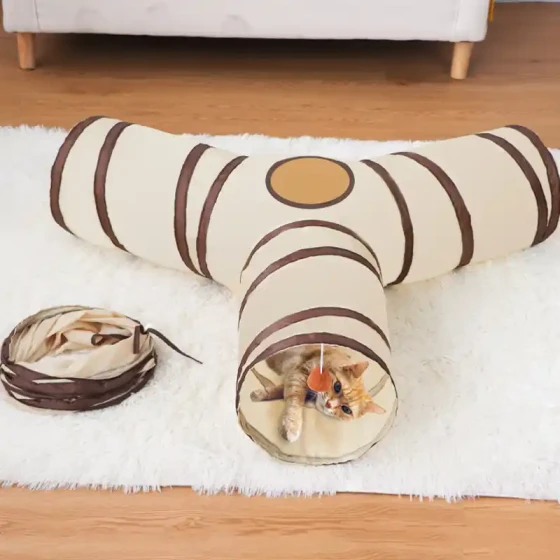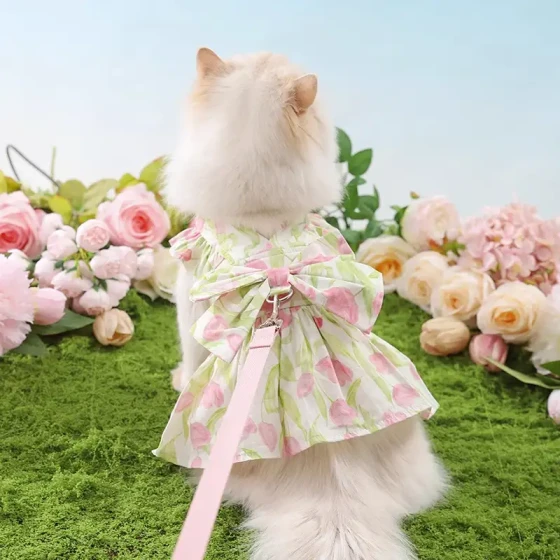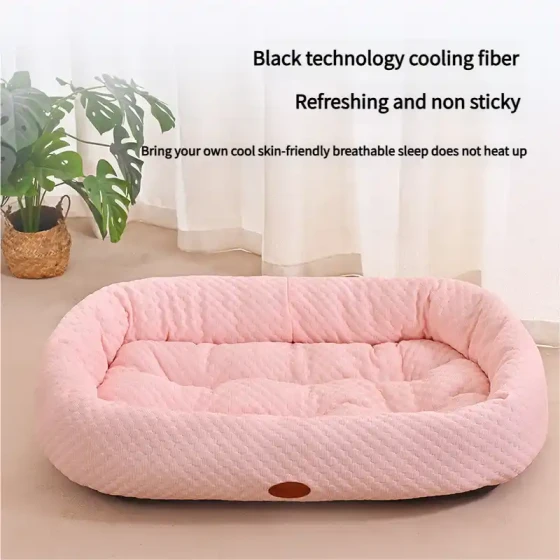Kitten’s Eyes Stuck Shut by Eye Discharge_Causes and Solutions for Kitten’s Excessive Eye Discharge and Cannot Open Eyes
Kittens’ eyes stuck shut by eye discharge is indeed a headache for many new cat parents. Simply put, when encountering this situation, first don’t panic. You can help clean your kitten’s eyes using gentle methods, but if the eye discharge keeps increasing, changes color, or if the kitten has other discomfort symptoms, you must take it to the vet as soon as possible because it could signal underlying health issues.
Why do kittens tend to have more eye discharge? It’s like human babies sometimes having eye discharge, but for kittens with weaker immunity, excessive eye discharge is often not a minor issue. There are many common causes, such as mild eye irritation or viral or bacterial infections.
Common causes of “stuck eyes”:
- Feline Herpesvirus (FHV-1): This is a very common virus for feline upper respiratory infections and is especially easy to spread among kittens. After infection, cats may have tearing, increased eye discharge (sometimes clear, sometimes yellow or green), sneezing, runny nose, even fever, and loss of appetite. Eye symptoms are typical; severe cases may cause conjunctivitis (redness and swelling around the eyes), corneal ulcers, etc.
- Feline Calicivirus (FCV): Another common viral cause of feline upper respiratory infections with symptoms similar to herpesvirus. It may cause eye and nasal symptoms and sometimes oral ulcers.
- Chlamydia or Mycoplasma infections: These bacterial infections also cause eye inflammation and increased eye discharge in cats, usually causing conjunctivitis with red, swollen eyes.
- Bacterial infection: Secondary bacterial infections due to viral infection or other irritations can make eye discharge thick and yellow or green.
- Allergies or irritations: Dust, smoke, pollen, or other environmental irritants can cause kittens to tear and have increased eye discharge.
- Malnutrition: Especially kittens deficient in lysine and other nutrients, with weaker immunity, are more prone to eye diseases.
Knowing the possible causes, simply wiping off the eye discharge is only a temporary fix; finding and addressing the root cause is key.
Solutions for kittens with eye discharge and stuck eyes:
When you find your kitten’s eyes are stuck shut by eye discharge, you can follow these steps:
- Prepare tools: You need clean warm water (boiled and cooled to warm temperature about 30-35°C, tested on the inside of your wrist to feel warm but not hot) or pet-specific eye wash, disposable cotton balls, or soft clean gauze. Avoid using tissue paper or napkins as they shed fibers and can irritate the eyes.
- Calm the kitten: Find a quiet comfortable place, gently hold the kitten, and soothe its emotions. If the kitten resists strongly, ask someone to help hold it steadily.
- Moisten and soften: Soak a cotton ball or gauze with warm water or eye wash and gently apply to the eye covered by discharge, hold for a few seconds to allow dried discharge to absorb moisture and soften. Just like when we have crusty eyes in the morning, moistening first makes cleaning easier.
- Gently wipe: After softening the discharge, use a moistened cotton ball or gauze to gently wipe from the inner corner of the eye (near the nose) outward. Wipe in one direction only; do not rub back and forth. Use a new cotton ball or gauze for each wipe to avoid cross-contamination. If one eye has heavy discharge, change to a fresh cotton ball or gauze before cleaning the other eye to prevent spreading infection.
- Repeat multiple times: If there is a lot or very dry discharge, you may need to repeat moistening and wiping several times until the eye can open naturally. Remember to be gentle and patient throughout to avoid injuring the kitten’s eyes.
- Keep clean: After cleaning, observe your kitten’s eye condition. Keep the kitten’s living environment clean and hygienic, clean the litter box regularly, and reduce dust and irritants.
When must you see a vet?
Although mild eye discharge can be relieved by cleaning, the following situations indicate a potentially serious problem requiring immediate veterinary attention:
- Abnormal discharge color: If discharge is yellow, green, brown, or contains blood streaks, this usually indicates bacterial infection.
- Large and persistent discharge volume: Even after cleaning, a large amount of discharge quickly reappears.
- Red and swollen eyes with uncontrolled tearing: The sclera is congested and red, eyelids swollen, or tears continuously flow.
- Kitten shows pain or discomfort: Such as squinting eyes, scratching eyes with paws, avoiding light.
- Cloudy eyes or ulcers: The pupil area looks opaque or white/gray spots or indentations appear on the eyeball surface.
- Accompanied by other symptoms: Such as sneezing, coughing, runny nose, lethargy, loss of appetite, fever. This suggests systemic infection.
- Cleaning is ineffective: After gentle cleaning, the kitten’s eyes still cannot open or do not improve.
The vet will examine to determine the specific eye problem cause. They may conduct tests (such as fluorescein staining to check for corneal damage, swabs for pathogen detection), then prescribe appropriate medications like antibiotic eye drops, antiviral drugs, anti-inflammatory medicines. Always follow the vet’s instructions and do not use human eye drops on cats yourself.
How to prevent eye problems in kittens?
Prevention is better than treatment:
- Keep environment clean: Regularly clean the cat’s living space, especially the litter box, to reduce dust and bacteria.
- Provide balanced nutrition: Ensure kittens get complete and balanced food to strengthen immunity.
- Regular check-ups and vaccinations: Follow the vet's advice to have timely health check and vaccinations, especially for feline herpesvirus and calicivirus vaccines, which effectively reduce infection risks.
- Observe carefully: As responsible cat parents, pay daily attention to the kitten’s mental state, appetite, and any abnormal signs around the eyes, nose, etc.
Frequently Asked Questions
- Q: Can I use chloramphenicol eye drops made for people?
A: Not recommended. Human eye drops’ components and concentrations may not suit cats and some ingredients can be harmful. Always use pet-specific eye drops or follow vet instructions. - Q: After cleaning the eye discharge, the eyes are still red—is this normal?
A: If the eyes remain noticeably red after discharge removal, it may indicate conjunctivitis or other inflammation, and you should consult a vet. - Q: My kitten is only one month old and has eye discharge—is this normal?
A: Newly born kittens sometimes have a small amount of eye discharge due to blocked tear ducts or mild irritation. But if there is a lot of discharge, eyes cannot open, or other discomforts appear, take it seriously and see a vet promptly.
In short, excessive eye discharge causing stuck eyes in kittens is common. Mastering the correct cleaning method is important, but more important is knowing when to seek professional veterinary help. With more attention and timely care, your kitten can grow healthy and happy.



